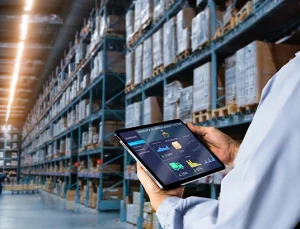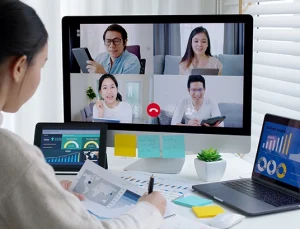- Posted on : July 23, 2021
-
- Industry : Corporate
- Type: News

The following is an article by Rajiv Naithani, that appeared in SightsIn Plus, July 2021 edition. Follow this link to view the original article.
Future has always been uncertain and unseen. Our ability to visualize future helps us to understand tomorrow and prepare ourselves in advance for the possible obstacles and opportunities. However, sometimes the situation may catch us unprepared. This is what happened when entire world hit the pandemic. A new normal started. Suddenly health became the priority for everybody. Employee well-being came on the top of the chart for all corporates. Companies which were very strict on not following any rule around remote working or work from home, was forced to adopt technologies to support remote
working. The entire working model changed overnight.
Its been over 15 months now and we see many organisations have not yet opened their offices and their employees continue to operate remotely. Infact, more than 30% of their population have never seen the
office as they joined during these many months. Over 25% of the employees have relocated to their hometowns and operating out of there. Earlier this year, companies were hopeful to bring the employees back to workplace and return to work had already started kicking in. However, India grappled with the second wave of coronavirus and companies had to push their plans of returning to work to an unknown future date. However, with the vaccination availability, the hope of going over the pandemic has become
stronger. It’s the time when there is a need for organisations to go back to the drawing board and draw the future working models.
Future Workplace
When we imagine the future workplace, things look different. We wouldn’t have 100% people operating out of the office. The future working model for the organisations would be hybrid. In post pandemic era, companies which never experienced work from home would offer remote working for certain roles to be a differentiated benefit to attract the right talent from outside. All global studies and surveys have been clearly indicating the future working models to be hybrid. This means, workplaces will have certain set of employees working from office and remaining operating out of remote locations.
While preparing for the hybrid working model and expecting employees to return to workplace in a gradual manner, companies will need to remain very sensitive to the employees’ perception and anxiety. Today, companies which are not perceived to be the human-cantered organisations and lack empathy would struggle to attract the right talent from the market. Due to remote working, location of work has become blurred and without changing the location, a right candidate can fetch any offer from across the country. The market has become very competitive, and, in some industries, it has turned as employee market. These industries are observing increased attrition and offer drop-out situations. Therefore, the way return to work will be implemented by the companies will determine how many of their talent will be comfortable with the same.
Managing Return to Work; Empathy Being the Key
There is only one way through which companies can manage the transition on working model effectively and that is by demonstrating high amount of empathy while making decisions. Employees have been very cautious about returning to the workplace due to ongoing pandemic situation. Instead of making a hasty decision of mandating employees to return to work, companies need to follow empathy-driven steps to ensure employees are comfortable with the implementation plan. Return to work plan will require deep thinking on some of the points listed below -
1) Employee Readiness to Return:
It’s important for companies to carry out survey with existing employees to understand how many of them are willing to return to work in future. Employees can be given the option of working remotely permanently, having flexibility to work in hybrid approach, returning to workplace permanently. This will help companies to understand the voice of the employees and plan reopening of the offices in future.
2) Employee Safety and Wellbeing:
Employee wellbeing and safety would be key to drive return to work model. Helping employees with vaccination drive and ensuring only those employees are allowed to return to work who have been fully
vaccinated is very important. People who want to return to company would not be comfortable if they need to visit a workplace where the fear of contracting disease is higher.
3) Restructuring of Workplace:
Workplace structuring will need to be redone to ensure physical distancing and hygiene are maintained. The entire facility management will undergo significant change. This also includes companies defining policies on people gathering and defining meetings protocols to provide a safe work environment.
4) Addressing Solution for Hybrid Working Model:
Hybrid working model may not be the perfect model for all. There would be challenges too. One of the biggest challenges would be the efforts in ensuring sense of belongingness with the organisation. With increased remote working arrangement, employees will lose sense of association with the organisation as they would have no or lesser opportunities to ‘experience’ office or other colleagues in person. This would require companies to adopt newer ways of engagement with the employees. The other issue
would be redesigning the overall employee life cycle for catering to both segments of employees (i.e.
employees operating from office and employees operating from home). It would not be easy for functions and management team to set up any ad hoc discussion or calling everybody for an event or activity with ease. While setting up something in person would help for employees working from office, it would still need to be thought through how that would be replicated simultaneously for employees operating remotely and their involvement and participation is also ensued.
5) Employee Experience
is the most important aspect of managing return to work. What people feel and experience makes it or breaks it. We live in an experience economy and if our policies and services are not aligned to this underlying fact, we will struggle in becoming future-ready. Experience is defined
by our ability to become a humane organisation demonstrating compassion and empathy in our
dealings with stakeholders, especially employees.






